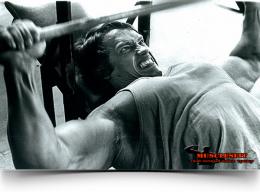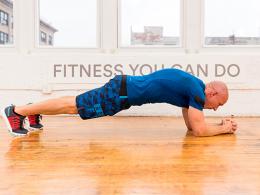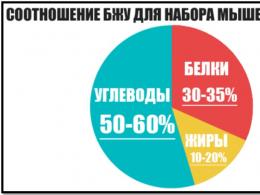How to build muscle mass at home
The statement that a man should be big and strong should not cause any doubts, since it has been tested by nature itself. However, now there are many who want to make money by speculating on this topic, who offer sports nutrition to athletes under the guise of a miracle pill or invite everyone to fitness centers, a subscription to which costs incredible money.
In this article, we will tell you what you can gain muscle mass at home, eating exclusively healthy food and not devastating the family budget. The rules of training are considered, we will present a set of exercises and recommendations on nutrition.
Conditions for successful weight gain
Exists 3 key factors , observance of which predetermines a successful result in bodybuilding. To these "three whales" relate:
- workout;
- food;
- recovery.
The share of training in the final picture is not as significant as people far from bodybuilding might think. Even if in exercises with iron you give all your best at 150%, but at the same time you do not provide yourself with sufficient nutrition in terms of calories and normal rest, all the efforts made will simply go down the drain.
This is explained by the usual physiological rules, according to which the body can only increase its weight if it receives excess energy - when the amount of nutrients getting into it is higher than the number of calories burned per day.
Training only stimulates muscle growth- during weight training, you load muscle fibers, as a result of which they receive many microtraumas. And since the human body is able to adapt to any conditions of life, it heals damage and starts the process of increasing the volume and strength of muscle fibers, so that when exposed to similar loads in the future, the muscles can cope with them without micro-damages.
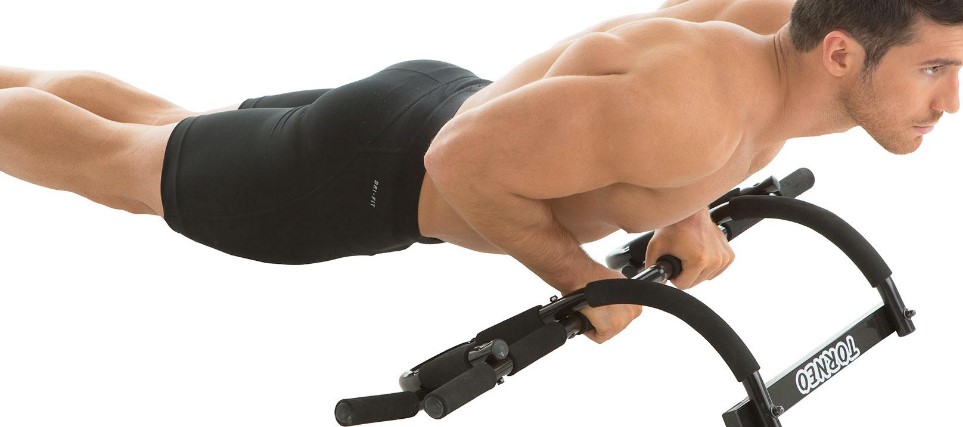
This implies one of the most important rules for gaining mass - in the process of training, you must constantly raise the training load (increase the weight of the shells, the number of repetitions or intensity), since the body adapts to the same load and no muscle growth occurs when it is repeated.
What and how much to eat?
For successful muscle building daily caloric content of your diet should be 500-700 kcal more than the number of calories your body burns in a day. The energy consumption of the body directly depends on the level of physical activity of a person, so there are no general recommendations here.

A specific number of calories can be found by multiplying your weight by 35 and multiplying the resulting number by 1.2 for moderate activity or 1.4 for serious activity. For example:
- 70*35 = 2450 kcal- daily energy consumption of the body of a man weighing 70 kg, engaged in sedentary work;
- 2450*1.2 = 2940 kcal- the daily calorie intake necessary for weight gain.
The nutritional value of any food consists of 3 components - proteins, fats and carbohydrates, the amount of which also needs to be dosed. When gaining mass, it is recommended to adhere to the following BJU:
- squirrels - 35%,
- fats - 25%,
- carbohydrates - 40%.
Protein is a key micronutrient for building muscle. , which can be called a building material for muscle fibers. Carbohydrates also provide the body with energy, their absence affects the increase in fatigue and less performance in training. Fats are needed to ensure the correct flow of biological processes and metabolism.

- When recruiting, you need to eat foods containing complex carbohydrates - porridge(buckwheat, rice, pearl barley), potatoes, black bread. If you get too carried away with starchy and sweet (fast carbohydrates), instead of muscle mass, you can only gain fat.
- Main sources of protein must be meat, fish, eggs and cottage cheese . The best option is chicken breast, which contains a minimum amount of fat and is not expensive.
- Basically you need to take vegetable fats - nuts, linseed oil , since they contain more nutrients and are better absorbed, among animal fats, only fish oil is useful.
Since the calorie content of your diet, and hence the volume of food consumed, will increase, eating everything as before - for 3 meals a day, will become problematic. We recommend sticking to 4-5 meals a day, and be sure to eat a lot of carbohydrates within an hour and a half after training, and eat 200 grams of cottage cheese before going to bed.
How to train?
The question of the training program rests on the factor that you have the required equipment. If you want to get the most out of home training, then you will need to take care of the availability power frame and bars with pancakes with a total weight of up to 150 kg. For the first year of classes, this number of pancakes will be more than enough.
The power frame can be bought in specialized stores, there is also a good option to save money by ordering it from a familiar welder (there are many drawings of such structures on the Internet). Olympic vulture you need to buy, you can take it for 3-4 thousand.
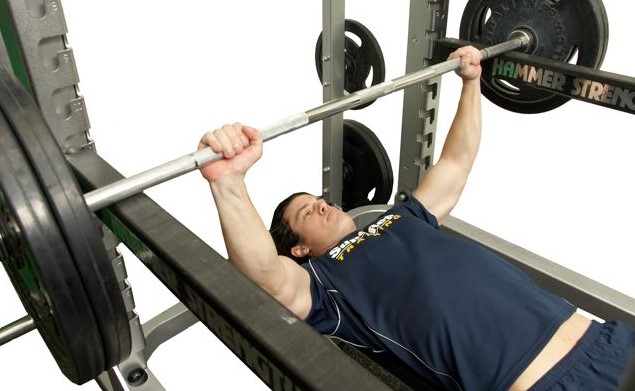
Regarding training. In the first half of the year, it makes sense to train according to the system "fullbody", working through all muscle groups in one workout. Here is an example of such a program:
- Power rack squats: 4x8.
- Bench press in a power rack: 4x8.
- Pull-ups on the horizontal bar: 5x6.
- Lifting the bar for biceps: 3x8
- Bench press standing: 3x8.
- Pulling the bar to the chin: 3x8.
The most difficult exercises - squat, bench press and pull-ups are at the beginning, since they are best performed when not tired. At first, do not try to work with large weights - this is fraught with injuries, first you need to sharpen your exercise technique, and only then increase the weight on the bar.
But what if it is not possible to use a power frame and a barbell in a house or apartment? In this case, you will at least need a horizontal bar, bars and a pair of stacked dumbbells weighing from 5 to 25 kg. The program is the following:
- Pull-ups on the horizontal bar: 5x6.
- Incline dumbbell row: 3x8.
- Lifting dumbbells for biceps: 3x8.
- Push-ups on the uneven bars: 5x8.
- Dumbbell press up: 3x8.
- Dumbbell layout standing: 3x8.
Exercises on the horizontal bar and parallel bars , after they begin to be given to you relatively easily, you must perform with additional weight, observing the principle of increasing loads. You can use an ordinary backpack by putting a bag of sand in it, if finances allow - buy a weightlifting belt and hang a pancake from a barbell or a weight with a chain.
Is it necessary to use sports nutrition when exercising at home?
The answer to this question will be unequivocal - no, not necessarily. All novice athletes need to understand that sports nutrition (protein, gainers, etc.) is not a magic pill that can significantly speed up the achievement of the goal, but only ordinary proteins and carbohydrates chemically synthesized into powder form. Thus, everything that a sports nutrition can give you, you can consume by eating a regular portion of natural food.

“But professional bodybuilders use it!”- you say.
Indeed, protein and gainer are constant companions of experienced bodybuilders, but there is a rational explanation for this. People with a long experience of training and weighing 100 kg or more, in order to maintain the existing mass and further progression, must consume a huge amount of calories, up to 4-5 thousand, which is an extremely tedious process to obtain from natural food.
Thus, the jocks get the standard 3 thousand kcal with regular meals, and the missing calories and trace elements are finished off with a gainer and protein shakes. As a result, taking sports nutrition is only a matter of convenience, and not a panacea.


